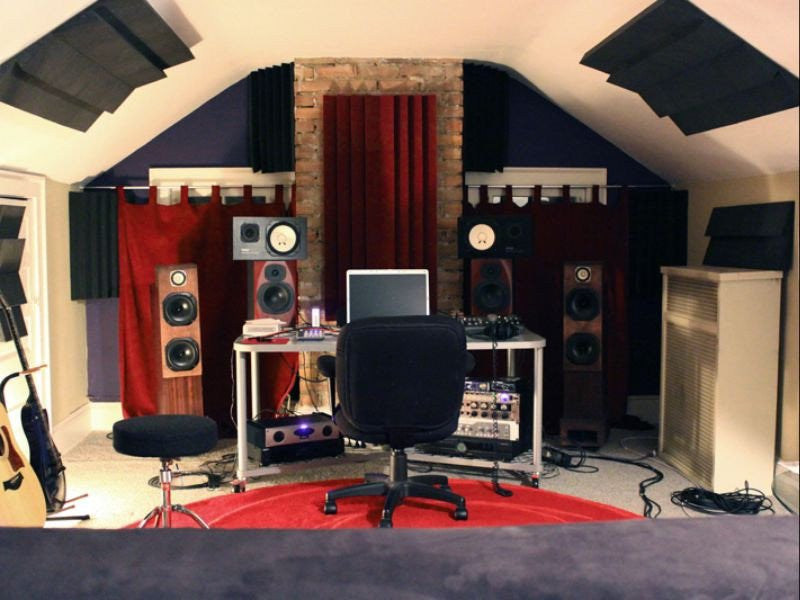Setting up your home decor keeping in mind the Home cinema acoustics
Most buyers, even some of those genuinely interested in high end home cinema experience, tend to treat their gear as akin to another piece element of furnishing. They give it an equal amount of attention as any other element of a living room. This is a logically inconsistent approach, as it achieves neither end; your furnishing and décor is compromised because of the home cinema, and your sound and video specs are constrained because of the furniture in the room. A home cinema system, being a highly complex and interconnected modular network of gadgets, can never be treated to be similar to a table or a lamp. As such, there are two logical approaches to get the job done quickly seamlessly with minimal errors. As you’ll see below, they have largely to do with your priorities as a homeowner and as an audiophile.
Top-Down Approach
For those who want home comfort and accessories to be their primary priority but still hope to have enough space to fit in a home cinema with individual audio and visual modules placed at strategic locations, the top-down approach is often the way to go. It involves furnishing your room first, and then configuring a home cinema system. Here are five key steps to be followed:
-
Build a Weighted Inventory
Depending on the number of people in the house, the culture and geographical location of your house, the availability of ambient light, as well as a number of other factors of various degrees of importance, build a list of furnishings and decorative elements to your room that you would like, giving each element in your inventory a unique number out of hundred. Use a spreadsheet such as Excel, which will provide you a model of your room containing elements in increasing order of priority.
2. Estimate Space Availability
Once the basic amenities of your living room is decided upon, take a look at how much space is left for a home theatre. Look for numbers instead of qualitative estimation – for example, try to spot locations in and around your room that are fit for speakers, tweeters, woofers, amplifiers, players, and screens. Decide upon the dispensable elements of your room accordingly.
3. Make Amends to Fit in a Home Cinema
Determine the orientation of your home cinema keeping in mind the direction of ambient and natural light, the availability of seating space, open wall area for a mounted screen (rarely, projectors), and room for appropriate arrangements of speakers. Try a number of different orientations and weigh the pros and cons of each until you determine which direction your home theatre will be best in. Arrange your room furniture in a way that optimises home theatre placement in this direction.
4. Determine Ideal Specs and Modules
Now that you have the basic framework of a home cinema system fixed, look at the best specifications that you can come up with for said arrangement of elements and space. This is the trickiest part of this approach, and is likely to involve detailed research on the internet and a few trips to the showroom.
5. Assign Suitable Locations to Each Module, and retrofit
Finally, assign each module of your home cinema system a specific spot in your living room. Once you have the locations, retrofit your decoration i.e. change your decoration in a way that minimizes noise and obstruction.
Reductionist Approach
The reductionist approach is suitable for those who have exquisite sound quality at the top of their list of objectives. It involves opting for the home theatre that would be ideal for your room if it were devoid of all furnishings, and then making a trade-off by acquiring and arranging furnishings and decors in a way so as to minimize losses.
1. Decide upon Preferred Home Cinema Configuration
Pay atmost attention to what specifications of home cinemas you wish to have in your living room. At this stage, do not compromise on features thinking of accessories or home elements – we’ll think about that later.
2. Assign Suitable Locations to Each Module
In an empty room, it should be easy to figure out which direction a home theatre is best placed in. With that information, and the specs of your home theatre already known, you should have no trouble assigning each module of your home cinema an ideal location in your room. This will get you a rough picture of the “skeleton” of your home cinema.
3. Estimate Remaining Space
The remaining space in your room is measured excluding the space that is deliberately kept vacant in order to minimise the obstructions offered by furnishings to sound of various frequencies. It is also a good idea to come to this stage after necessary insulation has been accounted for.
4. Build Weighted Inventory of Furnishing and Décor
With the “skeleton” theatre and the remaining space estimated, go about building the same inventory as in step – 1 of the top-down approach. The only difference is, of course, that this time it is the choice of furniture that is restricted, instead of your home cinema configuration.
5. Decorate the Rest of Your Room
The list from step 4 should give you a clear idea of what you can and cannot afford to include in your living room. Make judgement calls, be creative and innovate to saturation so as to come up with a sturdy and elegant décor for your room.






Comments
0 comments